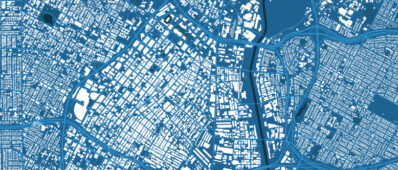Abstract
The primary intent of this research is to explore the claim that transportation benefits can be derived from neo-traditional neighborhood design. Conventional transportation planning models are used as tools to evaluate the performance differences of two hypothetical street networks designed to replicate a neo-traditional and a conventional suburban community. Relative transportation benefits are measured in terms of vehicle-miles travelled (VMT), average trip lengths, and congestion on links and at intersections. This comparison provides an assessment of how well the two networks in question deal with trips generated by the activities which they serve. All aspects of the modelled communities are held constant except for the actual configuration of the networks. This type of evaluation can indicate, for example, whether the same level of activity (defined by the land uses within the community) creates greater congestion on one type of network, or if trip lengths on one network are generally longer. The ultimate goal is to determine if one network type, because of the nature of its design, can result in a more efficient transportation system.



